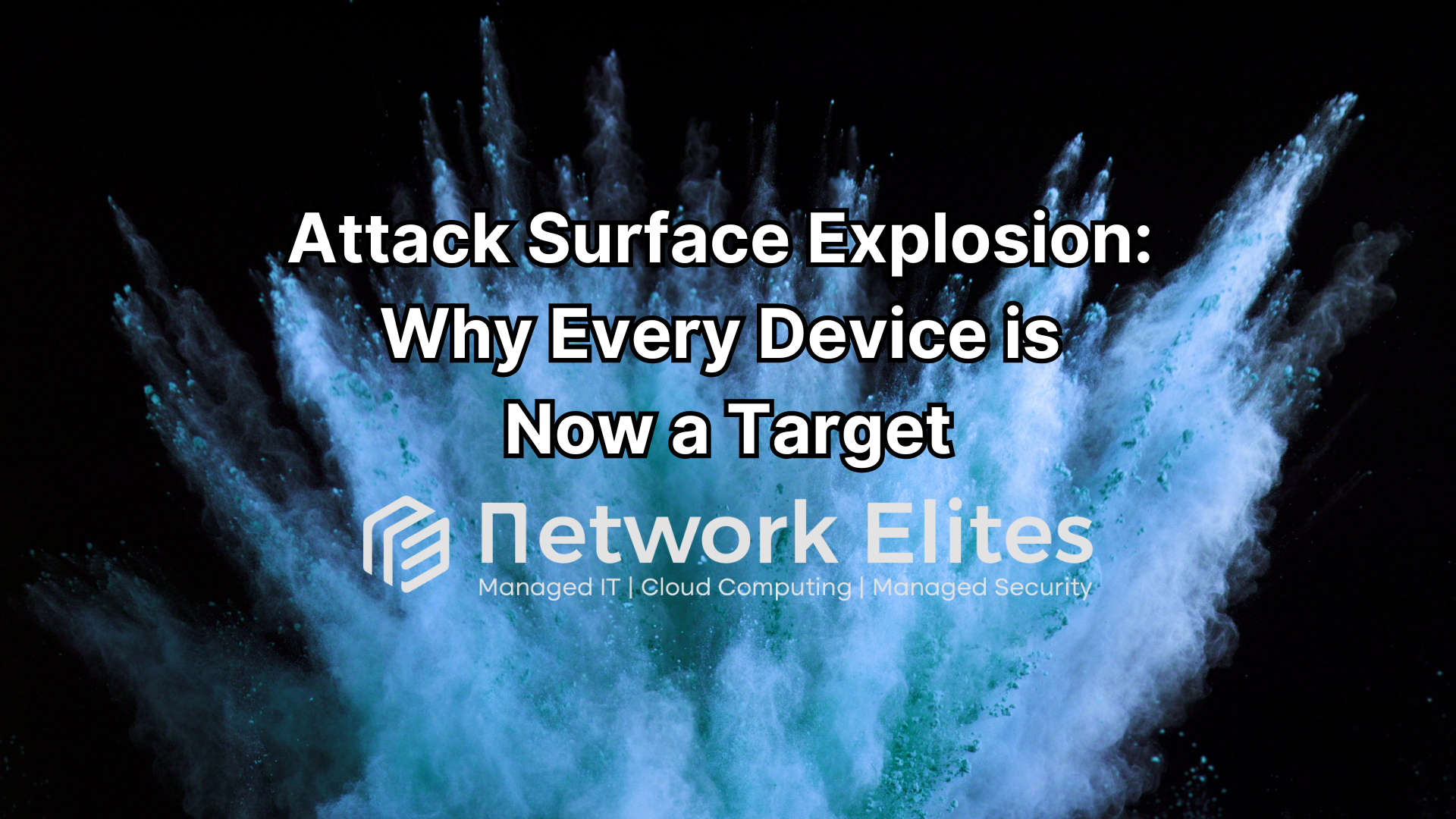Attack Surface Explosion: Why Every Device is Now a Target
The modern digital landscape resembles a fortress under siege, but the walls keep expanding. Every smartphone, smart thermostat, and cloud application adds another potential entry point for cybercriminals. This phenomenon, known as attack surface explosion, represents one of the most significant cybersecurity challenges facing organizations and individuals today.
An attack surface encompasses all the points where an unauthorized user can try to enter or extract data from a system. Traditionally, this meant securing a few desktop computers and servers behind a firewall. Those days are long gone. The attack surface now includes every connected device, application, and service your organization uses—creating a complex web of potential vulnerabilities that grows larger each day.
Understanding this expansion isn't just about keeping up with technology trends. It's about survival in an environment where a single compromised device can provide cybercriminals with access to your entire network. The stakes have never been higher, and the traditional approach to cybersecurity simply won't cut it anymore.
The Expanding Attack Surface
The explosion of Internet of Things (IoT) devices has fundamentally changed the cybersecurity landscape. Smart cameras, thermostats, printers, and even coffee machines now connect to corporate networks. Each device represents a potential entry point that may lack robust security features.
Mobile devices compound this challenge. Employees access corporate resources from smartphones and tablets, often using personal devices for work purposes. These endpoints frequently operate outside traditional network security perimeters, making them difficult to monitor and protect.
Cloud services have added another layer of complexity. Organizations now rely on multiple Software-as-a-Service (SaaS) platforms, each with its own security configurations and potential vulnerabilities. The shared responsibility model of cloud security means organizations must secure their data and configurations while relying on cloud providers to secure the underlying infrastructure.
Remote work has accelerated this expansion dramatically. Home networks, personal devices, and various connectivity solutions have extended the corporate perimeter far beyond the traditional office boundaries. This shift has made attack surface management exponentially more challenging.
Why Every Device is a Target
Cybercriminals have adapted their strategies to exploit this expanded attack surface. They understand that the weakest link often provides the easiest path to valuable data and systems. A compromised IoT device might not contain sensitive information itself, but it can serve as a stepping stone to more valuable targets within the network.
Data theft remains a primary motivation for attackers. Personal information, financial records, and intellectual property command high prices on dark web marketplaces. Even seemingly innocuous devices can provide access to networks containing this valuable data.
Ransomware operations have evolved to leverage multiple entry points simultaneously. Attackers often compromise several devices before launching their main attack, ensuring they maintain access even if some vulnerabilities are patched. This multi-vector approach increases their chances of success and makes detection more difficult.
Botnet recruitment has become increasingly profitable. Cybercriminals compromise thousands of devices to create networks they can rent out for various illegal activities. IoT devices make particularly attractive targets because they often lack sophisticated monitoring systems that would detect unusual network traffic.
Common device vulnerabilities make these attacks possible. Default passwords, unencrypted communications, and irregular security updates create opportunities that criminals readily exploit. Many IoT devices prioritize functionality and cost over security, leaving users vulnerable without their knowledge.
Mitigation Strategies
Organizations need comprehensive strategies to address attack surface explosion. Device security must start with inventory management. You can't protect what you don't know exists. Regular network scanning and device discovery help identify all connected endpoints.
Implementing strong authentication across all devices provides a crucial first line of defense. Multi-factor authentication, regular password updates, and certificate-based authentication can significantly reduce unauthorized access risks.
Network segmentation limits the damage from successful breaches. Isolating IoT devices, guest networks, and critical systems prevents lateral movement by attackers. This approach contains potential breaches and provides more time to respond to incidents.
Regular security updates and patch management remain essential. Automated update systems help ensure devices receive critical security patches promptly. For devices that don't support automatic updates, organizations need processes to monitor and apply updates manually.
Security awareness training helps employees understand their role in protecting the expanded attack surface. Teaching staff to recognize suspicious activity, use secure practices with personal devices, and report potential security incidents creates a human firewall that complements technical controls.
The Future of Attack Surface Management
Artificial intelligence and machine learning are transforming how organizations manage expanding attack surfaces. AI-powered security tools can analyze network traffic patterns, detect anomalous behavior, and respond to threats faster than human analysts. These systems excel at identifying subtle indicators of compromise across large numbers of devices.
Zero-trust architectures represent a fundamental shift in security thinking. Instead of trusting devices based on their network location, zero-trust systems verify every request for access to resources. This approach treats every device as potentially compromised and requires continuous authentication and authorization.
Extended Detection and Response (XDR) platforms provide comprehensive visibility across the entire attack surface. These solutions collect and correlate data from multiple security tools, providing security teams with a unified view of threats and automated response capabilities.
Cloud Security Posture Management (CSPM) tools help organizations maintain secure configurations across their cloud environments. These platforms continuously monitor cloud services for misconfigurations and policy violations that could expand the attack surface unnecessarily.
Taking Control of Your Attack Surface
The attack surface explosion represents a fundamental shift in the cybersecurity landscape. Organizations can no longer rely on perimeter-based security models or assume that any device is too insignificant to attract criminal attention. Every connected device is now a potential target, and comprehensive security strategies must account for this reality.
Success requires a proactive, multi-layered approach that combines technical controls with human awareness. Organizations must inventory their assets, implement strong security controls, and continuously monitor for threats across their expanding attack surfaces.
Network Elites specializes in helping organizations navigate these complex security challenges. Our comprehensive approach combines advanced threat detection, expert security consulting, and proven implementation strategies. Unlike one-size-fits-all solutions, we tailor our services to each organization's unique attack surface and risk profile. Our team of certified security professionals understands the nuances of modern threat landscapes and provides practical solutions that protect your business without impeding operations.
Don't let attack surface explosion leave your organization vulnerable. Contact Network Elites today to assess your current security posture and develop a comprehensive strategy for managing your expanding attack surface.








